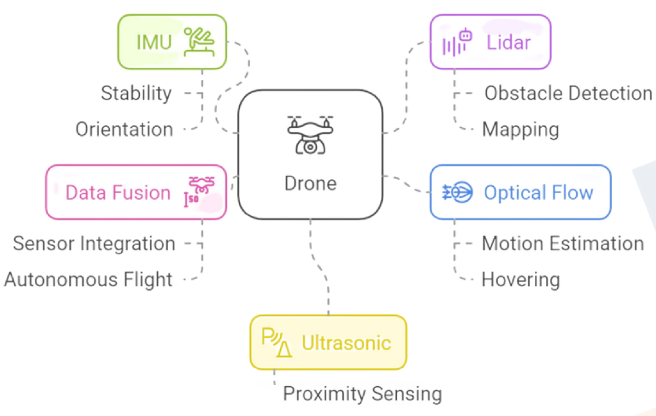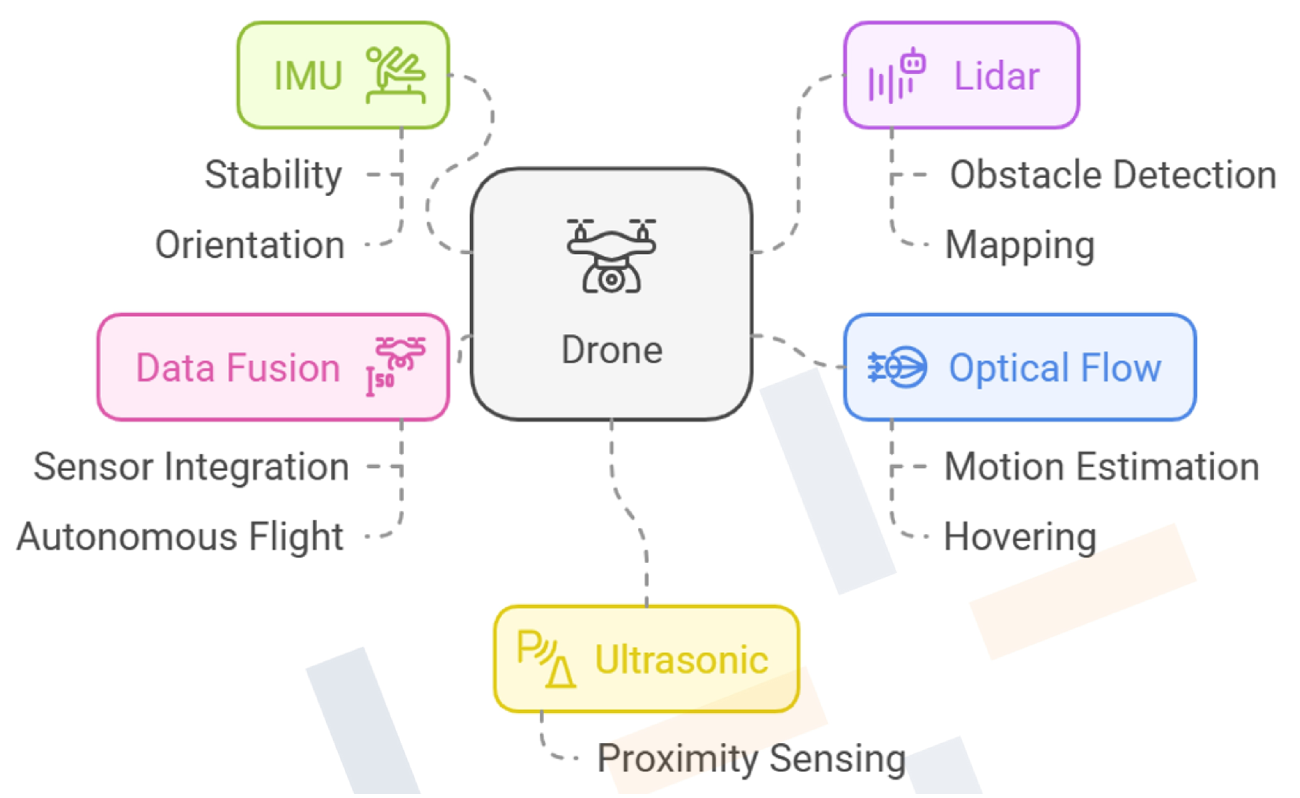By the time this knowledge bomb detonates…
You will have a much better understanding of the fundamentals of drones’ autonomous flight

Here we go!
why Sensors Are the Heart of autonomous drones?
Sensors are the foundation of a drone’s ability to:
- Maintain Stability
- Navigate Accurately
- Avoid Obstacles
Without Sensors autonomous flight is impossible
Beyond the IMU – Sensors for autonomy
To achieve autonomy, drones use additional sensors.
![]() Lidar: Creates 3D maps for navigation and obstacle avoidance
Lidar: Creates 3D maps for navigation and obstacle avoidance
![]() Ultrasonic Sensors: Detect proximity for low-altitude operations.
Ultrasonic Sensors: Detect proximity for low-altitude operations.
![]() Optical Flow Sensors: Use cameras to estimate motion and stabilize hovering.
Optical Flow Sensors: Use cameras to estimate motion and stabilize hovering.
Each sensor adds a layer of intelligence to the drone
the challenge of sensor integration
Integrating sensors is both a hardware and software challenge
- Hardware: Sensors must be placed to avoid vibrations and inteference,
- Software: Data from all sensors must be combined for a unified understanding
Proper Integration ensures:
- Stability in a dynamic environment
- Reliable obstacle detection
Why calibration is Critical
Calibrations ensures sensor accuracy by eliminating errors like:
- Biases
- Drift
- Environmental Interference
Examples of calibration
- IMU: Corrects offsets for stable flight
- Lidar: Aligns measurements for accurate mapping.
Recap: How Sensors Work Together

Want to master the art open-source drones?
Stay tuned for the next part of our series Open-Source Drones Unleashed: Mastering the skies


